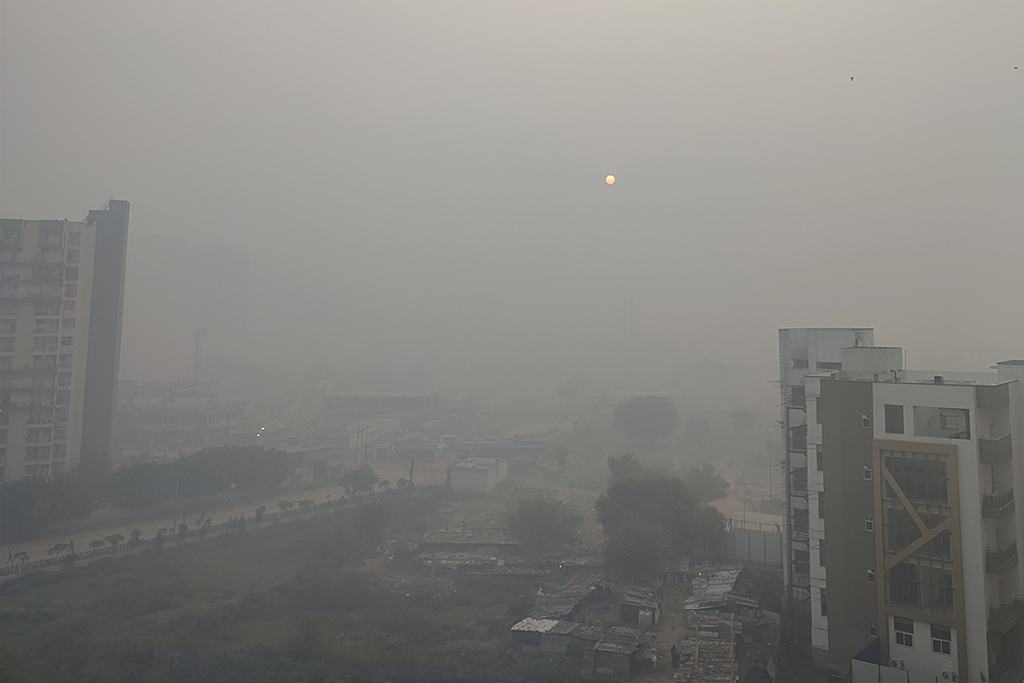India 3rd most polluted country in world: IQAir report
India emerged as the third worst air quality out of 134 countries in 2023 with an average annual PM 2.5 concentration of 54.4 micrograms per cubic after Bangladesh (79.9 micrograms per cubic metre) and Pakistan (73.7 micrograms per cubic metre), according to the World Air Quality Report 2023 released by Swiss organisation IQAir.
With 42 Indian cities out of the top 50 most polluted in the world, India dominates the global report.
Begusarai in Bihar tops the list for 2023, as the most polluted metropolitan area in the world seeing a huge jump in PM 2.5 levels from 19.7 to 118.9 micrograms per cubic metre. Guwahati also doubled its PM2.5 concentration from 51 to 105.4 micrograms per cubic metre.

Delhi is the world’s most polluted capital city for the fourth consecutive time (Photo: Media India Group)
Delhi, known for its ongoing battle against air pollution, is the world’s most polluted capital city for the fourth consecutive time, experiencing a slight rise in PM2.5 levels, climbing from 89.1 to 92.7 micrograms per cubic metre during the same period. Despite efforts to tackle pollution, the capital city continues to face challenges in maintaining air quality standards.
IQAir’s team of air quality scientists analysed data collected from over 30,000 air quality monitoring stations spanning 7,812 locations across 134 countries, territories and regions.
The report analysed data from all air pollution monitoring stations in India and underlined that 1.36 billion people in India experience PM2.5 concentrations exceeding the WHO recommended annual guideline level of 5 µg/m3.Overall, India with PM2.5 concentrations of 54.5 µg/m3 reported 10 times higher pollution levels than the WHO PM2.5 annual standard.
“In India, 1.33 billion people, representing 96 pc of the population, are exposed to PM2.5 levels exceeding the WHO annual guideline by more than seven times. This pattern is evident in city-level data, where over 66 pc of the country’s cities have annual averages surpassing 35 µg/m3,” said the report
Air pollution is estimated to be responsible for one in every nine deaths worldwide, according to the World Health Organisation (WHO). Approximately seven million premature deaths occur annually due to air pollution, particularly affecting individuals with conditions like asthma, cancer, and stroke. Additionally, exposure to high levels of PM2.5 has been linked to cognitive impairment in children, exacerbation of existing health issues, and adverse effects on mental well-being.
As the situation continues to worsen, environmental activists like Bhavreen Khandhari stress the urgent need for collaborative efforts and stringent regulations to address this public health crisis.
“There are various policies and programmes that have been made in India to address the issue but like any other policy measure, the success and efficacy of these initiatives hinge upon collaboration and coordination among various stakeholders,” Khandhari tells Media India Group.
“To combat the alarming levels of PM2.5 and safeguard public health, both short-term and long-term measures are imperative. This includes stringent regulation and enforcement of laws on industries, vehicles, and construction activities to mitigate PM2.5 emissions. And until people don’t demand and make their local authorities accountable, clean air will only be a dream and an electoral issue,” she adds.
With the continued dedication of activists, policymakers, and citizens alike, there remains hope for a future where clean air is not just a dream but a fundamental right for all. It’s crucial that the momentum generated by awareness and advocacy translates into tangible policy changes and grassroots initiatives to ensure a healthier environment for generations to come.











